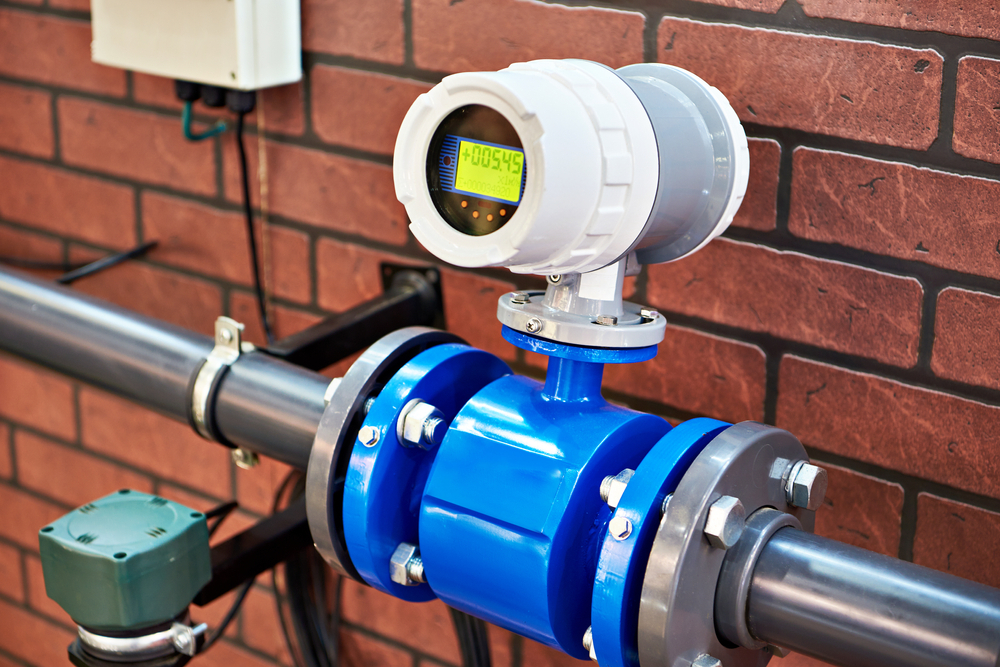A flow meter is a tool used to gauge a fluid’s flow rate. The mass, volumetric, linear, and nonlinear flow rates of a gas or liquid can all be measured with flow meters. flow meters are also referred to as flow measurement instruments or flow gauges. Precise measurements of gas and liquid flow are necessary for improved industrial process control and quality.
Types Of Flow Meters
In many industrial applications, flow management is crucial, and to satisfy the demands of these various applications, a variety of flow meters are specifically made for this purpose. Water, oil, natural gas, and steam are among the materials that are measured; the flow meters for each material have the same purpose but function differently. All flow meters have the same basic function, although they are all customised to fit a particular application’s requirements.
Volumetric flow meters and mass flow meters are the two main categories of flow meters. A mass flow metre measures the amount of mass, whereas a volumetric metre measures volume. This is where the two types differ from one another. Temperature and pressure affect a volumetric flow rate, but a liquid or gas’s density affects a mass flow rate. Open channel, mass flow, differential pressure, velocity, and positive displacement are some of the different types of flow meters.
Volumetric flow meters
Volumetric flow meters measure flow velocity to determine flow rate in a linear fashion. Volumetric flow meters are directly attached to pipes and are less sensitive to variations in viscosity than mass flow meters. Positive displacement, turbine, electromagnetic, ultrasonic, and vortex flow meters are some of the different types of volumetric flow meters.
Differential Pressure Flow Metre
A differential pressure flowmeter is a device that determines flow based on the geometric dimensions of the pipeline and the flow detecting component, the known fluid conditions, and the differential pressure produced by the component inserted in the pipeline. Differential pressure converter and flow display instrument are the secondary devices that make up the differential pressure flow metre, with the primary device being the detecting component. Differential pressure flowmeters are often categorised as test pieces, which include velocity-averaging tube flowmeters, Venturi flowmeters, and orifice flowmeters. Different integrated differential pressure transmitters, flow display instruments, and mechanical, electrical, and electromechanical integrated differential pressure gauges make up the secondary devices.
Positive Displacement Flow Metre
A Positive Displacement flow metre is a device that calculates the volume of fluid that is displaced by a number of rotors or chambers in order to determine the flow rate of a given fluid. This kind of flow metre is widely utilised in sectors including chemical processing, food and beverage processing, and oil and gas because it is very accurate, robust, and efficient. Positive displacement flowmeters, or PD flowmeters, work by filling a beaker with liquid, pouring it down an aisle, and counting each fill. This is accomplished by a rotating mechanism inside a precisely built chamber.
Ultrasonic Flow Metre
Ultrasonic flow meters use ultrasonic oscillation fluctuations to detect changes in flow rate. Doppler and time difference are the two types available. Doppler-type metres monitor the frequency shift of sound waves reflected by moving particles in the medium, while time difference type metres, also known as time-of-journey metres or transit metres, measure the amount of time it takes for ultrasonic waves to move from one location to another. Both are employed in the precise measurement of flow rate.
Mass Flow Metre
Mass flow meters track the mass of a substance moving through a system in a predetermined amount of time. They quantify mass in relation to time, usually in terms of kilogrammes per second (kg/s). Mass flow meters track the material’s velocity and density as it moves through the apparatus. The mass flow rate is then computed using this data. Mass flow meters are commonly employed in industrial processes, including those in the food, chemical, and pharmaceutical industries, to measure the flow of liquids, gases, and solids. The most often utilised mass flow meters in industrial settings nowadays are Coriolis flow meters.
Venturi Flow Metre
The benefit of venturi tubes is their capacity to manage high flow rates at low pressure drops. In essence, a venturi tube is a pipe segment featuring a straight throat and a tapering entrance. A pressure differential exists between the intake and output regions as a result of the liquid’s increased velocity as it moves through the throat. There are no moving parts on the flowmeters. Large diameter pipes can have them fitted using threaded, welded, or flanged fittings. To average the recorded pressure, the unit is typically equipped with four or more pressure taps. Most liquids, including ones with a high solids content, can be used with venturi tubes.
Calorimetric Flow Metre
The calorimetric concept, which asserts that a moving medium absorbs heat energy and transfers it away, is used by calorimetric flow meters, often referred to as thermal flow monitors. The flow metre has one heated sensor. The heated sensor cools as the flow travels over it. After the heated sensor’s heat is absorbed, a second sensor gauges the medium’s temperature. The difference in temperature between the two sensors determines the flow rate. The flow velocity is higher when there is very little difference between the sensors.
Conclusion
Flowmeters come in a variety of forms, each with their own set of benefits and drawbacks. Any fluid that flows through the pipes in your plant, including water and chemicals, can have its flow rate monitored by your business with the use of an appropriate flowmeter. Make sure you take care of any possible problems as soon as they come up to guarantee your flow metre keeps serving its important function.
